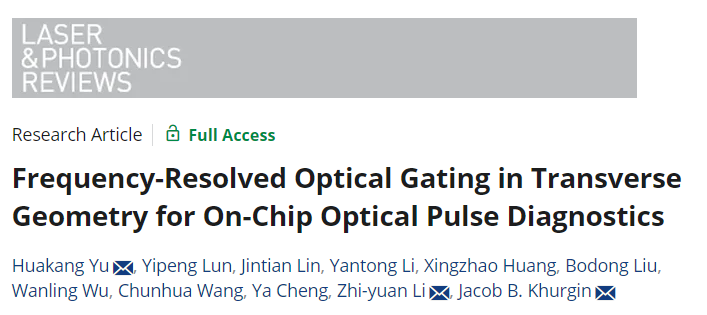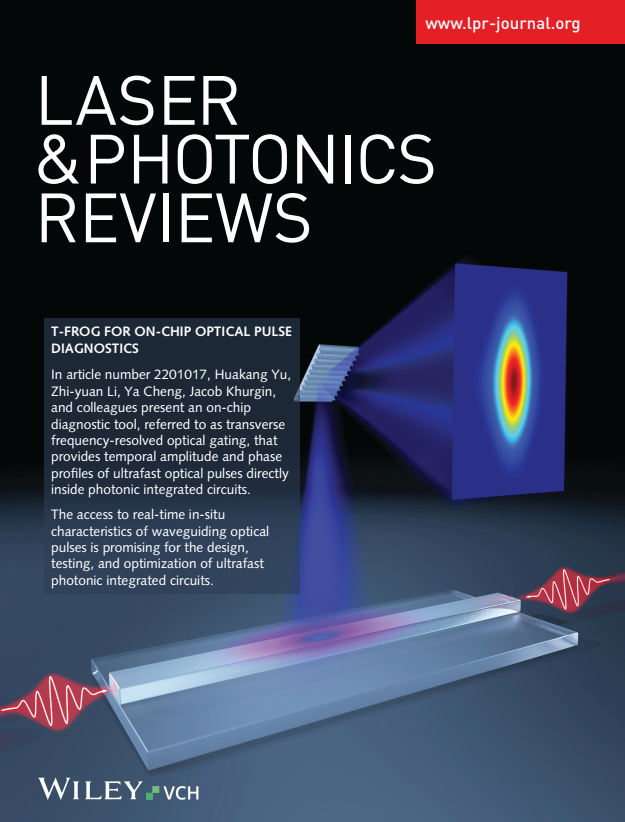In the past few decades, the integration and miniaturization of optoelectronic devices have become the main driving force for the development of modern photonics. In order to more accurately understand the generation, transmission, interaction and dynamic evolution of ultra-short optical pulses in integrated photonic circuits, it is particularly important to develop a real-time, in-situ, full-parameter characterization technique of ultrafast optical pulses on chip. Traditional ultrafast pulse measurement techniques, such as frequency domain resolved optical switch (FROG) technology, cannot be directly integrated into on-chip photonic chips, but the signal needs to be extracted and the relevant information measured by blocky nonlinear optical crystals. Obviously, the process of signal extraction will bring the inevitable distortion of optical pulse information, and it is impossible to understand the dynamic evolution information of optical pulse in the photon loop.

Recently, Professor Yu Huakang and Professor Li Zhiyuan's team developed a new integrated ultra-fast optical pulse in situ characterization technology. A recent research paper, Frequency-Resolved Optical Gating in Transverse Geometry for On-Chip, is published in Laser & Photonics Reviews Optical Pulse Diagnostics. Based on the lithium niobate thin film waveguide platform, the measured pulses travel in the opposite direction and meet in the lithium niobate optical waveguide. Based on the principle of transverse optical frequency doubling, the optical frequency doubling signal of time autocorrelation is automatically generated in its intersection and overlap region. By converting the spatial coordinates into time delay and spectral imaging of the intensity distribution of autocorrelation optical diploid, the trace plot equivalent to the traditional FROG is obtained. The intensity and phase information of the measured ultrafast optical pulses in time domain and frequency domain can be restored by inversion algorithm, thus completing the in-situ full-parameter characterization of the ultrafast optical pulses in the waveguide.
The experimental results show that this technique has excellent sensitivity and signal-to-noise ratio thanks to completely no background and enhanced transverse optical frequency doubling effect. Compared with commercial measuring equipment, it is found that it can accurately measure chirps in optical pulses, which proves its universality and accuracy as a diagnostic tool for ultrafine optical pulses. In addition, the method can also support cross-correlation operation mode, showing its potential application in the characterization of more complex light pulses.

Co-authors include Professor Jacob Khurgin from Johns Hopkins University and the team of researchers Lin Jintian and Cheng Ya from the Shanghai Institute of Optics and Fine Mechanics, Chinese Academy of Sciences. The completion of the thesis work also benefited from the constructive discussions of Academician Shen Yuanlan, Professor Liu Wei Tao and Professor Tong Limin. The research work has been funded by the National Natural Science Foundation of China, the key research and development project of the Ministry of Science and Technology, and the introduction of Innovation and Entrepreneurship team project of Guangdong Province.



